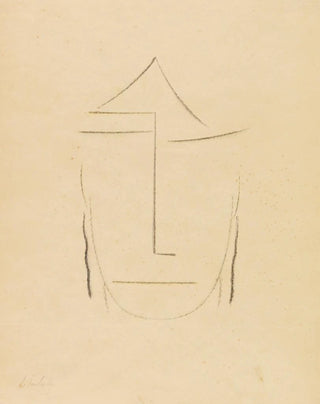Art print | Heads - Alexej von Jawlensky


View from behind

Frame (optional)
Reproduction Têtes - Alexej von Jawlensky – Engaging Introduction
In the vibrant world of modern art, the artwork "Têtes" by Alexej von Jawlensky stands out for its emotional depth and chromatic richness. This iconic piece, which transcends mere portraiture, invites viewers to immerse themselves in a world where shapes and colors blend to express the human soul. Jawlensky, through this creation, does not merely depict faces but explores the nuances of human psychology, revealing complex emotions and varied states of mind. The art print of this work allows one to appreciate the power of Jawlensky's art while integrating it into a contemporary space, thus offering an entry point into reflections on identity and expression.
Style and uniqueness of the work
Jawlensky's style is characterized by a bold approach to color and form. In "Têtes," he uses vibrant colors, often juxtaposed, to create a striking visual effect. The faces are stylized, almost abstract, allowing the work to transcend simple representation and touch on the very essence of the individual. Each face seems to tell a story, an emotion, and the blurred contours and contrasting shades add a mystical dimension to the piece. This stylistic choice reflects the influence of expressionism, but Jawlensky manages to forge a unique identity, blending spirituality and modernity. The composition, both simple and complex, invites prolonged contemplation, where each viewing reveals new interpretations and sensations.
The artist and his influence
Alexej von Jawlensky, a prominent figure in early 20th-century art, established himself through his unique approach and artistic vision. Born in Russia, he was influenced by his roots while incorporating elements of Western art, notably Fauvism and expressionism. His artistic journey is marked by an unceasing quest for the human soul, explored through portraits, landscapes, and abstract compositions. Jawlensky was also an active member of the Der Blaue Reiter movement, which advocated the idea that art should be a spiritual expression.

Matte finish

View from behind

Frame (optional)
Reproduction Têtes - Alexej von Jawlensky – Engaging Introduction
In the vibrant world of modern art, the artwork "Têtes" by Alexej von Jawlensky stands out for its emotional depth and chromatic richness. This iconic piece, which transcends mere portraiture, invites viewers to immerse themselves in a world where shapes and colors blend to express the human soul. Jawlensky, through this creation, does not merely depict faces but explores the nuances of human psychology, revealing complex emotions and varied states of mind. The art print of this work allows one to appreciate the power of Jawlensky's art while integrating it into a contemporary space, thus offering an entry point into reflections on identity and expression.
Style and uniqueness of the work
Jawlensky's style is characterized by a bold approach to color and form. In "Têtes," he uses vibrant colors, often juxtaposed, to create a striking visual effect. The faces are stylized, almost abstract, allowing the work to transcend simple representation and touch on the very essence of the individual. Each face seems to tell a story, an emotion, and the blurred contours and contrasting shades add a mystical dimension to the piece. This stylistic choice reflects the influence of expressionism, but Jawlensky manages to forge a unique identity, blending spirituality and modernity. The composition, both simple and complex, invites prolonged contemplation, where each viewing reveals new interpretations and sensations.
The artist and his influence
Alexej von Jawlensky, a prominent figure in early 20th-century art, established himself through his unique approach and artistic vision. Born in Russia, he was influenced by his roots while incorporating elements of Western art, notably Fauvism and expressionism. His artistic journey is marked by an unceasing quest for the human soul, explored through portraits, landscapes, and abstract compositions. Jawlensky was also an active member of the Der Blaue Reiter movement, which advocated the idea that art should be a spiritual expression.






